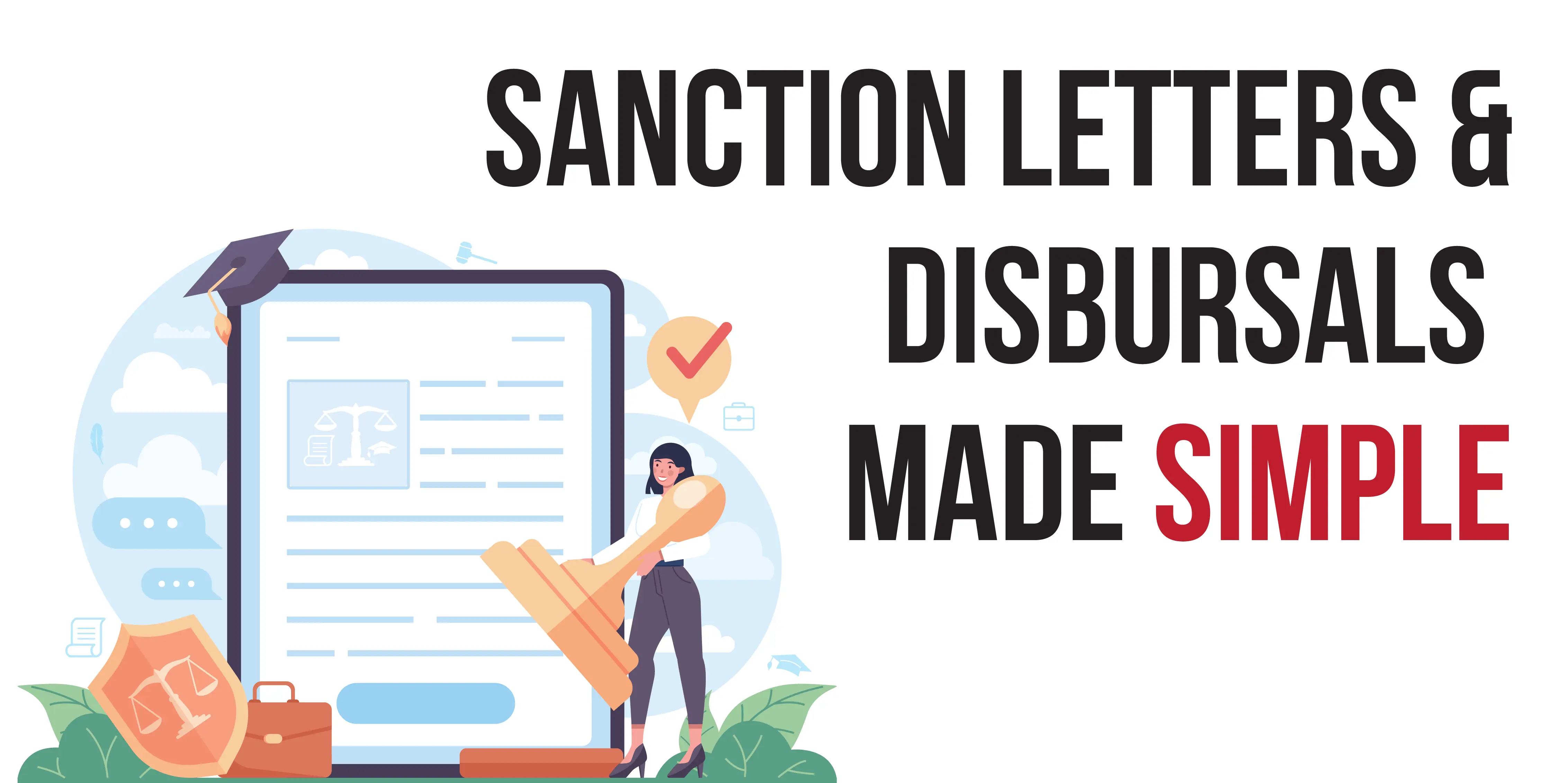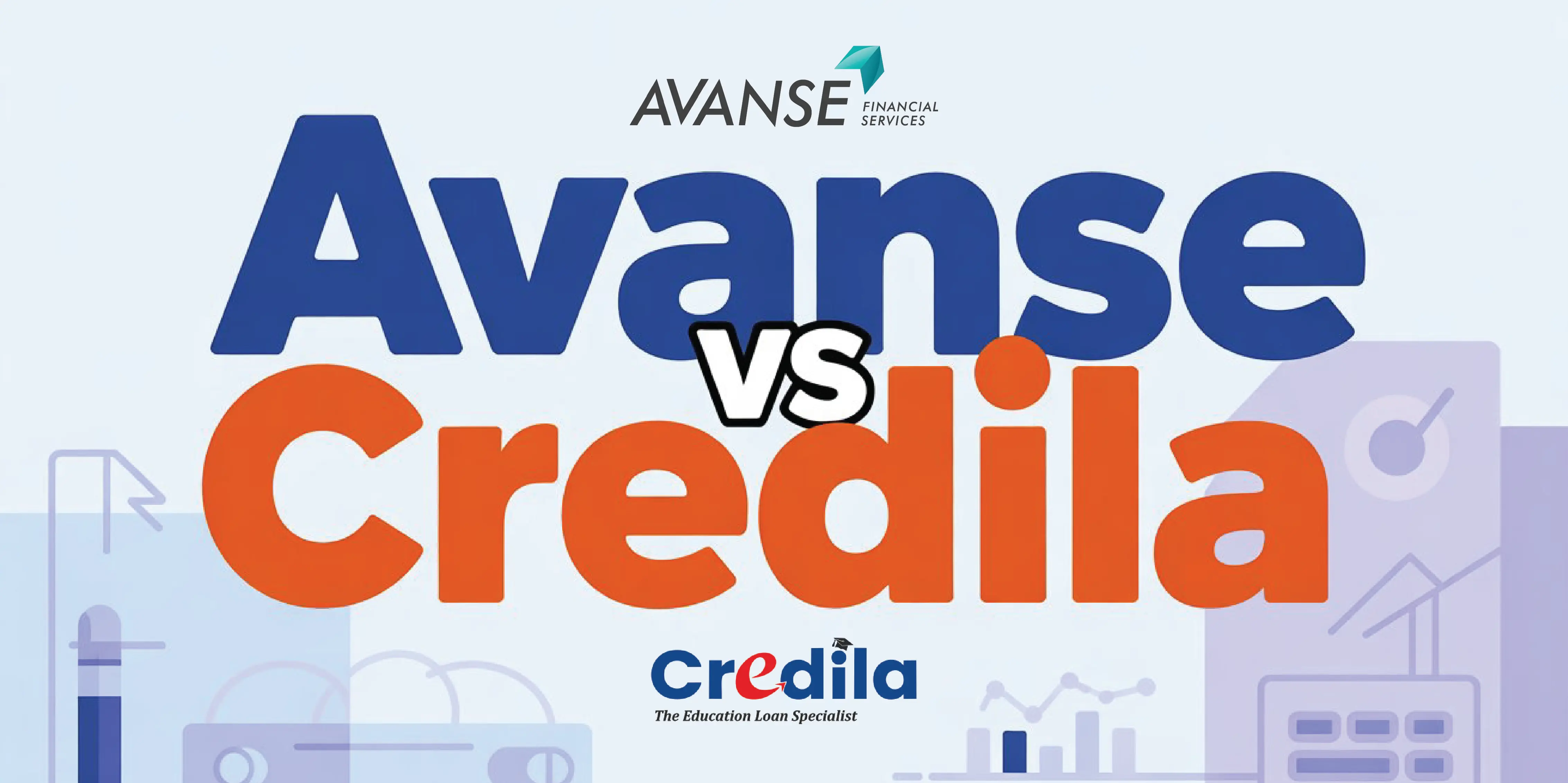https://www.wemakescholars.com/blog/fine-print-in-education-loan-sanction-letters-and-disbursals
Decoding Fine Print: Student Loan Sanction Letters and Final Disbursals
Abroad Education Loan | Updated on ()

Receiving a sanction letter and disbursing your education loan is crucial to accessing your student loan funds. However, many students often overlook the fine print of an education loan sanction letter and final disbursals.
It refers to the crucial details of an education loan final disbursal and sanction letter, which significantly impact the overall education loan repayment cost.
In this article, we will decode the fine print of an education loan sanction letter and final disbursals. We have also covered the key differences between education loan final disbursals and sanction letters.
What is an Education Loan Sanction Letter?
- An education loan sanction letter is an official document issued by the bank confirming that the education loan is approved.
- It contains all the essential details of the student loan, such as the loan amount, the interest rate, the repayment terms, and all other terms and conditions of the loan.
- A student loan sanction letter is a crucial document that acts as proof of funds for the visa and admission process. It is generally valid for 6 months. This means that you should take the first disbursement on your education loan within this period. Now that we have understood what a student loan sanction letter is, let’s look at its fine print.
Although getting sanction letter is a crucial step in your education process it is not the final step. Many students face several issues such as disbursement issues, repayment issues, and interest rates issues.
Apply for an education loan via WeMakeScholars, an organization funded and supported by the Ministry of IT, to avoid such issues. And if you do face any issues after receiving the sanction letter, we have a dedicated post-sanction team to help you resolve all your education loan issues on time. Request a callback today to contact us.
Fine Print of a Student Loan Sanction Letter
Students should carefully understand the fine print of their education loan sanction letters. Fine print of a student loan sanction letter refers to the crucial details mentioned in the sanction letter that are often overlooked. The following are the key elements of an education loan sanction letter that you should carefully review.
- Loan Amount: This is one of the first things that you should check on your education loan sanction letter. The total amount of money approved by your lender for your student loan will be specified on the sanction letter. You should check whether the loan amount mentioned on the sanction letter meets your requirements.
- Interest Rate: This is another crucial factor that you should check on the sanction letter. The rate of interest that your lender charges on your education loan will be mentioned in your sanction letter. Education loan repayments, i.e., the EMIs of the loan, are made up of both the interest and the principal loan amount. This is how the interest rate significantly impacts your overall repayment cost by determining your repayments. Verify whether the interest rate mentioned on the sanction letter matches the one your lender promised before.
- Collateral Requirement: The sanction letter also outlines the collateral requirements of the loan. It specifies whether the loan is secured or unsecured. Secured education loans require applicants to pledge acceptable collateral according to the bank, while unsecured loans do not. If the loan is collateral-based, the sanction letter also mentions the type of collateral accepted by the lender. Banks accept both immovable properties and liquid assets as collateral for education loans.
- Processing Fee: The sanction letter also outlines the processing fees for the student loan. It is a fee that banks charge to process the student loan application. You should carefully check the amount of the processing fee mentioned on your education loan sanction letter. The processing of education loans is typically a fixed amount or a certain percentage of the loan amount, i.e., 1% to 2%.
- Repayment Terms: An education loan sanction letter mentions the repayment terms of the loan. It outlines the total repayment tenure offer for the loan. Education loans usually come with a repayment tenure of up to 15 years, depending on the lender. The sanction letter also specifies the moratorium terms of the loan. Lenders typically offer a moratorium of the course duration plus 6 to 12 months for education loans. The repayments of the loan do not start until the end of this period. Although the repayments do not start, private lenders charge either a partial or full simple interest during the moratorium period.
- Penalties and Charges: The sanction letter also discloses the penalties charged by the lender for prepayments and late payments. Understanding this information is essential for repaymenmt planning helps you manage finances during the repayment period.
- Validity: Education loan sanction letters have a validity period, which will be mentioned on them. Student loan sanction letters generally have a validity of 6 months, during which students have to take their first disbursement.
If the sanction letter has expired before taking a disbursement, the loan will not be valid anymore, and the student would need to reapply from the start.
Understanding Education Loan Final Disbursals
Now that we have learned about the fine print of an student loan sanction letter, lets understand what an education loan final disbursal or disbursement means. An education loan final disbursal is the release or transfer the sanctioned loan amount to the applicants.
Unlike the sanction letter, it is the actual transfer of the promised loan amount in the sanction letter from the bank to the student’s or the university’s account. It is the last step of an education loan application that helps students cover their educational expenses. Banks can transfer your student loan funds in multiple disbursements according to your needs.
Fine Print of an Education Loan Final Disbursal
The fine print of an education loan final disbursal refers to the crucial details mentioned in the disbursement document. Students should carefully review these details to efficiently manage their student loan funds. The following are the key details that you should carefully check in your dedication loan disbursement document.
- Margin Requirement: Most banks require applicants to put up a certain margin amount before disbursing the student loan funds. This margin amount varies from bank to bank. This margin amount will be mentioned in the final disbursal document given by the bank.
Example: Suppose a student requires a total of ₹30 lakhs for his Master’s in the UK, including the tuition fees, living expenses, and all other educational expenses. However, the bank has agreed to fund 90% of the total cost and given the student an education loan of ₹27 lakhs with a margin of 10% requirement from the student. Now, when the student requires disbursement for the tuition fees of 20 lakhs, the bank will only disburse an amount of ₹18 lakhs(90% of tuition fees) and requires the applicants to bring in the rest ₹2 lakhs(10% margin) - Mode of Disbursement: As discussed, banks can transfer the student loan funds in multiple disbursements. The disbursal documents specify the mode of disbursement for each transfer. Banks often disburse the amount required to cover the tuition fees directly into the university’s account. The rest of the funds are transferred into the student’s account either in a lump sum or multiple disbursements, according to the loan agreement and the student.
- Documents Required: The disbursement document also specifies the documents required for the transfer of funds, such as the tuition fee document, visa requirement documents, and relevant receipts.
- Disbursal Time: It also specifies the time it takes for the bank to transfer the funds. It helps students plan their expenses while studying abroad. However, students often experience delays in their disbursement which can lead to late payment penalties and visa application issues.
Now, when you go via WeMakeScholars, as mentioned before, we have a post-sanction team to resolve any Disbursement issues you may face after the sanction in no time. Get in touch with our team today to avoid issues in your student loan disbursement process.
How Fine Print in the Student Loan Sanction Letter Differ from Disbursements?
The table below explains the key differences of fine print in education loan sanction letters and disbursements.
|
Parameter |
Education Loan Sanction Letter |
Education Loan Final Disbursal |
|
What is it? |
It is an official document issued by the bank that confirms the approval of the loan. It outlines crucial factors, including the loan amount, interest rate, and all other terms and conditions of the education loan. |
It is the actual release of the student loan funds from the bank to the university or the applicant. |
|
Purpose |
|
|
|
Key Elements |
It specifies the following crucial details of the loan:
|
It specifies the following details of the student loan disbursement:
|
Conclusion
Understanding the fine print of your education loan sanction letter and final disbursal is essential, especially when you took an education loan to study abroad. It refers to the key details of an education loan sanction letter and final disbursals that are often overlooked by many students. Getting a sanction letter for your education loan is a crucial step to accessing the funds through disbursements. However, many students often struggle to get their education loans sanctioned without the right guidance.
WeMakeScholars can help you in such situations. Our team is dedicated to assisting students in receiving education loan approvals on time. We provide complete education loan assistance to students applying through us. Request a callback today, and one of our experienced financial officers will contact you at your earliest.





Kindly login to comment and ask your questions about Scholarships & Education Loans